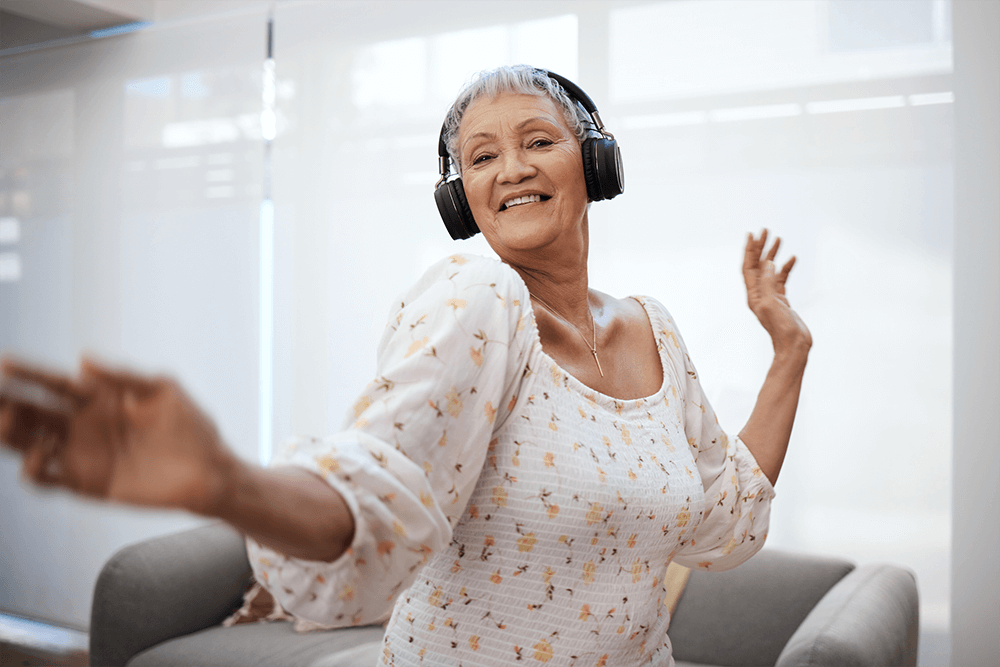10 Fun and Safe Physical Activities for Seniors

Did you know, according to the Centers for Disease Control and Prevention (CDC), adults aged 65 and older should aim for at least 150 minutes of moderate-intensity aerobic activity or 75 minutes of vigorous-intensity aerobic activity each week? Additionally, seniors should do muscle-strengthening activities that work all major muscle groups two or more days a week.
Staying physically active is crucial for seniors to maintain their health and well-being. Not only does it help prevent chronic diseases, but it also improves mental health, cognitive function, and social interaction. Here are 10 ways to incorporate more physical activity into your daily routine:
1. Walking
Walking is one of the simplest and most accessible forms of exercise for seniors. Whether it’s a stroll around the neighborhood or a walk through the local park, walking helps to improve cardiovascular health, strengthen muscles, and promote joint flexibility.
Why It’s Great: Walking is low-impact, easy to adjust for any fitness level, and can be done anywhere.
How to Implement: Set aside 20-30 minutes for a daily walk. Consider walking with a friend or joining a walking group for added social benefits.
2. Swimming
Swimming is an excellent full-body workout that is easy on the joints. It helps with strength, endurance, and flexibility while reducing the risk of injury. Water aerobics is also popular for reaping the benefits of physical activity for seniors.
Why It’s Great: The water’s buoyancy reduces joint strain, making it perfect for those with arthritis or joint pain.
How to Implement: Many community centers offer senior swim times or water aerobics classes. Aim for 2-3 sessions per week to maintain consistent physical activities for seniors.
3. Yoga
Yoga promotes flexibility, balance, and relaxation; plus, it is an exercise that can be done at home, making it ideal for seniors. It can also help with breathing, mental clarity, and posture, all while reducing stress.
Why It’s Great: Yoga’s gentle movements are adaptable for all fitness levels and can be done at home or in a group setting.
How to Implement: Start with beginner yoga classes or online videos tailored for seniors. Even 10-15 minutes of stretching each morning can make a big difference.
4. Tai Chi
Tai Chi is an ancient Chinese practice that involves slow, deliberate movements combined with deep breathing. It’s fantastic for improving balance and coordination, reducing the risk of falls, and enhancing overall mental focus.
Why It’s Great: Tai Chi is a low-impact activity that’s safe for seniors, especially those concerned about maintaining stability.
How to Implement: Look for Tai Chi classes in your area or find videos designed for beginners. Practicing for 15-20 minutes a day can yield significant benefits.
5. Strength Training
Strength training is crucial for maintaining muscle mass, bone density, and overall strength as we age. Using light weights or resistance bands can help prevent muscle loss and improve balance.
Why It’s Great: Building strength helps with everyday tasks and reduces the risk of injury from falls.
How to Implement: Use dumbbells or resistance bands at home for simple exercises like bicep curls, leg raises, and squats. Aim for 2-3 strength training sessions per week.
6. Dancing
Dancing is a fun way to get moving while improving coordination, balance, and cardiovascular health. Whether it’s ballroom dancing, line dancing, or just grooving to your favorite tunes at home, dancing can elevate your mood and keep you active.
Why It’s Great: It combines exercise with socialization, which is especially beneficial for mental and emotional health.
How to Implement: Join a dance class at a local community center or dance in the comfort of your living room. Try to incorporate dancing into your weekly routine at least twice a week.
7. Cycling
Cycling, whether on a traditional bike or a stationary one, provides excellent cardiovascular exercise. It helps strengthen the legs, improves endurance, and is low-impact, making it easy on the knees and hips.
Why It’s Great: Cycling is adaptable to various fitness levels and can be done indoors or outdoors.
How to Implement: Use a stationary bike at home or at the gym, or join a cycling group in your community. Aim for 30 minutes of cycling several times a week.
8. Gardening
Gardening may not seem like a workout, but digging, planting, weeding, and watering can all provide benefits of physical activity for seniors. It helps with flexibility, strength, and balance while offering time in nature.
Why It’s Great: Gardening combines physical movement with mental stimulation and relaxation, making it a holistic activity.
How to Implement: Spend 20-30 minutes a day tending to your garden or indoor plants. Stretch before and after to prevent muscle strain.
9. Volunteering
Volunteering can often involve physical activity, whether you’re delivering meals, helping at a local charity event, or assisting with community cleanups. It’s a fulfilling way to stay active while giving back to others.
Why It’s Great: Volunteering provides both senior physical activities and emotional satisfaction, which can boost overall health and well-being.
How to Implement: Look for opportunities to volunteer in your community that require light physical activity. Even committing to a few hours a week can keep you moving and engaged.
10. Stretching and Mobility Exercises
Stretching is often overlooked, but it’s essential for maintaining flexibility and preventing injury. Gentle mobility exercises also help improve the range of motion in joints, making daily tasks easier.
Why It’s Great: Stretching helps to reduce stiffness, improve posture, and increase blood flow to muscles.
How to Implement: Spend 5-10 minutes each morning and evening stretching your major muscle groups. Consider adding mobility exercises like ankle rolls and shoulder shrugs.
The Importance of Staying Physically Active for Seniors
The benefits of physical activities for seniors go far beyond physical health. Regular movement helps improve cognitive function, boosts mood, reduces the risk of chronic conditions, and increases independence. Incorporating these fun, safe, and engaging activities into your daily routine can enhance your quality of life and keep you youthful and energized. Remember, before starting any exercise routine, check with your doctor to ensure it’s safe for you.
At Springpoint Senior Living communities, we understand the importance of maintaining an active lifestyle as you age. That’s why our communities are designed to help seniors enjoy a low-maintenance, worry-free environment so that they can focus on their health and wellness. With plenty of opportunities to stay active and engaged, we ensure that our residents live life to the fullest, every day.
Springpoint Choice Helps You Embrace an Active Lifestyle
Join Springpoint Choice and take advantage of our award-winning LivWell program offerings, available at all of our Life Plan Communities. LivWell tailors programs to your interests, goals, and abilities. Contact our team today to learn more.
